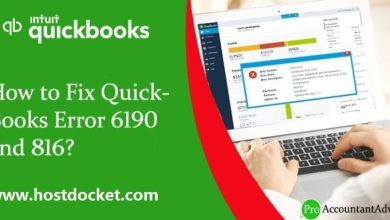Tips for building a current account buffer faster

Your bank must have set the limit for a minimum balance in a current account you own, which means under no circumstances are you permitted to withdraw that money. Once your account balance drops below that limit, overdraft fees will be charged. It can quickly add up unless you settle it once and for all.
It is vital to have a current account buffer as it can prevent you from running up an overdraft in case of an emergency. The buffer includes a small amount of money that you can count on to cushion the blow of unexpected expenses. It is mainly a difference between the bare minimum balance you have to keep in your account and money for your monthly expenses.
You should keep at least 20% of your living expenses in your current account buffer. However, it depends on your needs and goals. For some, only 10% is enough, while others will set aside 30% of their living expenses.
Why should you have a current account buffer?
Life can throw you a curve ball at any time. Having a current account buffer can help you keep your head when unexpected expenditure pops up. A buffer can keep you from dipping into savings for planned expenses and running up an overdraft.
- There is no fear of paying overdraft fees because a buffer will prevent you from accidentally dipping into the minimum balance. Overdraft fees and interest can ruin your budget.
- Overdrafts can pull your credit points, and their damaging impact stays on the report for a long time. You can prevent your credit rating by having a buffer.
The buffer just provides you with an injection of extra cash when emergencies catch you on the wrong foot. You do not have to rush to direct lenders to borrow money.
Having a current account buffer is typically crucial for those who are young adults. While you may think that you can easily qualify for a loan, many lenders do not offer first time loans for 18 years old at affordable deals. No credit history and insufficient income are to blame for that.
Tips for building a current account buffer
It can be quite difficult to have a buffer if you are living paycheque to paycheque, yet you can use the following strategies to get started:
- Prioritise and automate your savings
First off, you need to identify how much your budget allows you for your buffer. Grab your bank statement for the previous six months, calculate the average spending for each month, and see if there is a chance to leave some extra funds.
Once you have determined a fixed limit, you can opt for automation. Having savings in your current account can be hard. So, a wise move is to transfer that amount of money to your savings account. Automation will ease the pressure off your shoulders to transfer money every month.
- Reconsider your expenses
You should look over your expenses and find out areas where you can cut down. Focus on inessential expenses like dining out, subscriptions and the like. You do not have to ban them, but temporary abatement can make it a bit quick to save money for the unexpected.
In addition, you should focus on grocery bills. Think of ways to reduce it. Buying some items in bulk or from the local supermarket can be a way to cut back on your grocery bills. You do not need to buy branded items. Generic products can also offer the same sort of quality.
Cancel subscriptions that you do not use. There is no point in paying for gym and magazines when you do not use them. However, because, at this time, your focus is on building a buffer, you will have to be ruthless with your discretionary expenses.
- Increase your income
You cannot build a buffer if you are living paycheque to paycheque. In case you come across an emergency, it will be difficult for you to borrow money due to a lack of repaying capacity. No lender can offer you personal installment loans unless you can afford to pay them back.
Therefore, it is suggested that you increase your income. The money you earn from a side gig can be used for emergencies. Narrow down your skills and find a job that best interests you. Make sure you choose a side gig that you can manage with your full-time job.
- Borrow money smartly
Despite a buffer and an emergency cushion, you may need to borrow money. Only if you can pay back the debt should you borrow money. Make sure you choose an affordable loan. Instalment payment plans make it easier to manage debt, but they will cost you more in total interest. You should carefully consider your financial circumstances while choosing a payment term.
If you have a credit card, use it for emergencies, provided you can pay off the balance within the interest-free period. While borrowing money, explore all options and know all their advantages and drawbacks. Borrowing can throw you into a never-ending debt spiral.
You should carefully ensure your affordability.Compare interest rates from different lenders and choose the one with a more affordable deal.
The final word
A current account buffer can keep you from running up overdrafts. However, it is not meant to replace an emergency cushion. The buffer can help you meet regular expenses as well – for instance, when your energy bills go up. It can be difficult to do so especially if you are living paycheque to paycheque, but try to chip away at your monthly expenses.




